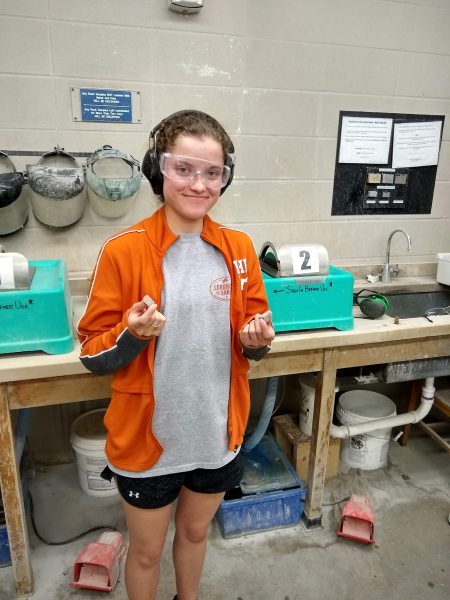For Roman- Era Stone Tools, Geology Mattered
October 29, 2021

Last year, an archaeology graduate student showed up at the Electron Microbeam Laboratory at the Jackson School of Geosciences with a box of rocks.
The rocks were from 16 stone tools found scattered among the ruins of Volubilis, a Roman outpost in Morocco that thrived during the 1st century A.D. Archaeologists identified the tools as grinding and mixing implements, but they were curious about the significance of their geology.
What sorts of rocks were in the stone tools and what could they reveal about the ancient Roman world?
Lab manager Omero “Phil” Orlandini and two undergraduate students, Lauren LoBue and Scott Culotta, were game to find out. They joined an interdisciplinary team of geoscientists and archaeologists that examined the tools from a cultural and geological perspective.
The team included Christy Schirmer, the archaeology graduate student; Jared Benton, an archaeology professor at Old Dominion University; and Derek Weller a geologist at the University of Tokyo.
The results were published in the Journal of Archaeological Science: Reports in August 2021.
The geoscientists discovered that each type of stone tool was made from a distinct rock type. Grain millstones were made from vesicular basalts, olive mills from clastic and fossiliferous limestones, and dough mixers from lower-energy limestone with almost no clastic material or fossils.
The study suggests that the rock types might relate to the function of the tool. For example, the many vesicles, or holes, in the basalt may have helped in grinding grain into flour and retained the millstone’s rough texture.
What’s more, the researchers determined that the stone was locally sourced. This finding challenges the prevailing idea that grain millstones were imported from Italy. It also raises the possibility that the tradespeople who used the tools were in communication with the craftsmen who made them. The Jackson School team took the lead on analyzing the lithology of the rock samples. The students learned how to create thin sections and conduct X-ray diffraction SEM-CL to determine the minerals present in each sample. They presented their geological findings at the Jackson School’s student research symposium.
“It wasn’t anything I expected to be doing. It was an interesting project,” said LoBue. “I like classics too, and this let me combine different interests.”
Back to the Newsletter